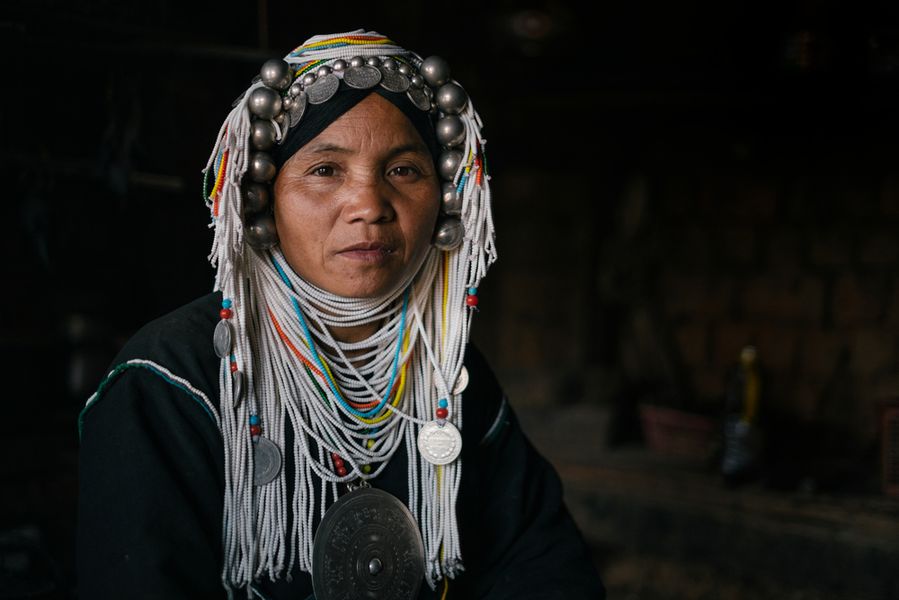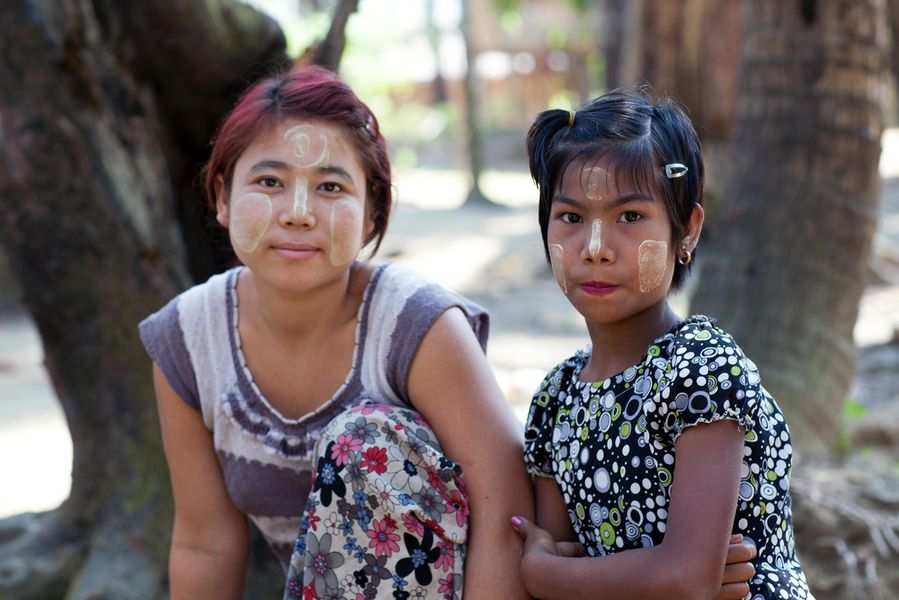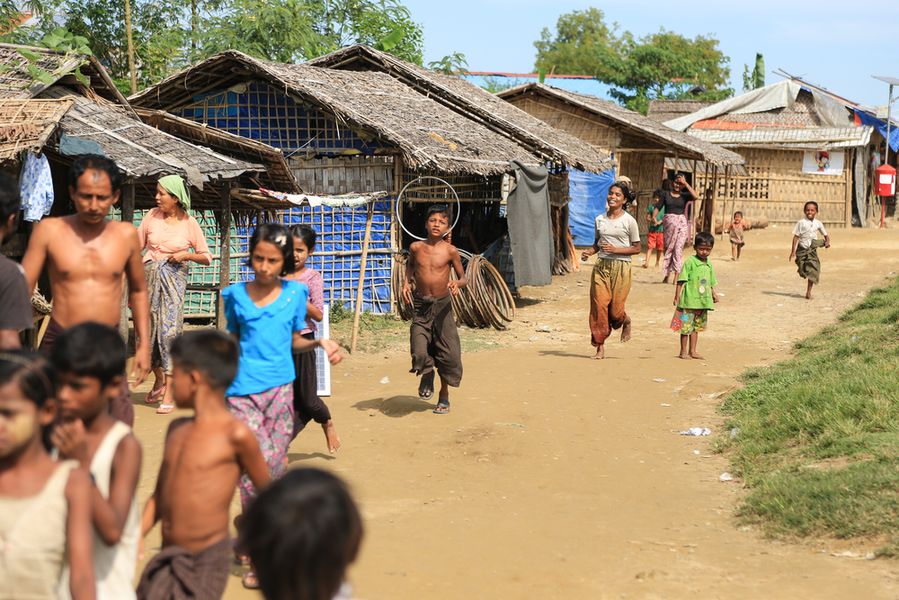Myanmar - belief and religion
Myanmar is famous for its strong faith in Buddhism being conveyed through pagodas and Buddhist sacred places. The Buddhist population makes up 87% followed by those believing in superstitions 4.5%, Christian 4% and Islamic and Hindu 1.5%. (Steven, 2002:62)
Buddhism has laid a foundation for Burmese society since Pyu Kingdom and Bagan Kingdom. Over 1,000 years, Burmese Buddhism has been molded with other existing religions and beliefs in Myanmar. (นฤมล ธีรวัฒน์ และคณะ.2551:233) (158)
Buddhism
Mon is the first group in Myanmar adopting Theravada Buddhism from the Southern Buddhist School in India. (Steven, 2002:55) It is believed that Buddhism arrived at Myanmar when Ashoka the Great of India had managed to revise Tripitaka for the third time. He sent out nine groups of the emissaries to spread Buddhism in different regions. (ฟื้น ดอกบัว, 2554:182) The Burmese people believed their land located in Suvarnabhumi had a center at Thaton in the South of Myanmar. In the 6th Buddhist era, Buddhism in Myanmar was flourishing as Pali-recorded evidences were found. A historian, Tatrnat, believed Theravada Buddhism came into existence in Myanmar in Ashoka the Great era. (ประวัติพุทธศาสนาพม่า, 2015)
Myanmar announced Buddhism as its official religion in 1947. Now it is the strongest establishment in the country due to enduring traditions. First, it has closer relations with the monarchy and the Buddhist monks. Second, it has maintained doctrinal visions and strong disciplines by meeting with other Theravada Buddhist leaders in different countries especially in Sri Lanka and Thailand. Lastly, dedications and contributions to Buddhist monks, sacred places and the secular world have been immense. (นฤมล ธีรวัฒน์ และคณะ.2551:234-235)
With its distinctive characteristics, Burmese Buddhism can be the underlying principle for varied ethnic groups. Its depth of knowledge reaches out to people on many levels such as philosophical level, meditation level and commoner level. Buddhism helps unifying the diverse society of Myanmar, so it has become a symbol of unity. Burmese leaders at different times can never deny the importance of Buddhism. The Tripitaka knowledge for commoners offers moral standards and Sloka teachings called ‘Tou’. Some focus on the Middle Path teaching. However, advanced knowledge of Buddhism is not familiar to the commoners even though some have entered the monkhood. They only know three things about Buddhism. First, it is the ideas of virtue and karma. Second, it is the Buddhist precepts and their conducts. Third, it is the native beliefs in Myanmar. (นฤมล ธีรวัฒน์ และคณะ.2551:246)
In addition, Buddhism and the monks played a vital role in Burmese politics in 1930 when they rallied against British Empire. Later in 1988, the monks were the backbone against the military government administered by General Newin. His government having violated the rights and freedom of the people since 1962 resulted in a bloody crackdown that claimed over 1,000 lives. Various nations have paid more attentions and watched how the Burmese play out in politics. Buddhism and the Buddhist monks act as a spiritual anchor of the Burmese people in both secular and political spheres as the Burmese monks are often seen rallying against the government, showing supports for Burmese politicians or expressing disapprovals at other religious groups of people.
‘Nat’ and the Burmese belief
Myanmar is the land of Buddhism and Buddhist pagodas. The Buddhist Burmese respect the monks as their spiritual anchor. However, the Burmese society still has beliefs persisting on superstitions. One of those is worshipping Nat. Some have Nat altars sitting next to their Buddhist altars in their houses. Some have a spiritual house standing in front of their houses. Meanwhile, along the roads or even in the pagoda lawn, the Nat icons can be seen in forms of god, goddess, the old man and giant. The Burmese worship Nat in many spheres. (วิรัช นิยมธรรม และ อรนุช นิยมธรรม, 2551:143)
The Burmese sage believed the word ‘Nat’ came from a Pali word ‘Natr’ meaning a fine sanctuary. According to the old etymology book of Myanmar called Linthadipani and the 6th Burmese encyclopedia, Nat has an unambiguous definition. Nat has three parts: Visuthinat is the purified like Lord Buddha, individual Buddha and Buddhist saints. Uppattinat is gods in heaven. Sommuttinat is kings, queens, princes and princesses. Moreover, the gods of universe are also Nat. They are gods of planets, the sun god, the moon god, the fire god and the wind god. So, Natr can be the gods in heaven, the saints and the powerful on earth while the Burmese dictionary has defined Nat as the gods protecting humans, holy spirits of those not dying well and the adjective modifying words such as Natsaba, Kawnat, Kawpa, Natyedawing, Saranat, and Natural Sara. Whatever born out of nature is believed to be the power of Nat, so Nat in Burmese notion is the powerful, gods and holy spirits. It does not include Lord Buddha, the Buddhist saints, the kings and the royal families. (วิรัช นิยมธรรม และ อรนุช นิยมธรรม, 2551:143-144)
The Burmese have a belief that human body is made of Kokaya and Kwan (Lepya). When one dies, his Kwan is becoming a spirit wandering on earth where it has spiritual power commanding and possessing others to serve his wills. This belief of becoming Nat resonates to the belief in a spiritual world as U Pho Ja has described in his book called Tongsaekunimeng or the 37 Nats that “No matter what race, caste, sex or age one is, if he is respectful and kind, his death is tragic. The public learns about his death and is deeply touched. The hearsay is getting louder so that his spirit is becoming Nat.” (วิรัช นิยมธรรม และ อรนุช นิยมธรรม, 2551:145)
The Burmese have several ways to connect with Nat in cluding worshipping, making offers, being possessed and taking vows. Worshipping Nat in different places is a similar practice, yet Nat might favor different kinds of food offerings. Some prefer vegetarian offerings while some prefer raw food such as raw fish and raw meats. Some prefer liquors when possessing a human body. Some prefer smoking. (วิรัช นิยมธรรม และ อรนุช นิยมธรรม, 2551:161)
The belief in Nat of the Burmese in a way that it is protective spirits has been enduring in the Burmese society even longer than Buddhism. Nat in the past had played out a crucial role in building the earlier days of Bagan Kingdom where it was later revered as guardians. It is possible that in the reign of King Anawrahta, Buddhism had invaded and the native belief in Nat was undermined. Nat was regarded only as the Buddhist guardians. However, the Burmese are still lingering to the belief in Nat so that the Burmese society is primarily Buddhist with the belief in Nat. (วิรัช นิยมธรรม และ อรนุช นิยมธรรม, 2551:168)
Hinduism
The Hindu in Myanmar approximately 840,000 people are mostly Burmese-Indian. They believe in Brahman. Hinduism was introduced to Myanmar in the ancient time when Rakhine had been bordered by Mnipur of India. The religion was spreading through that area. (Religion in Myanmar, 2015)
Hinduism had been a dominant religion in Burmese court before the colonial days. Hindu religious architectures in Bagan and the influence of Pali-Sanskrit language in Burmese language are evident. However, the former belief in Tajamin God, the origin of Hindu Indra God still lives on. Shiva or Paramizwa, Vishnu or Withano, Saratavi or Thuyathadi are other Hindi god the Burmese revere. In addition, Burmese literature is also influenced by Hinduism. Ramayana is known as Yama Zatdaw. (Religion in Myanmar, 2015)
The Hindu Burmese mostly live in Yangon and Mandalay. Many ancient Hindu religious places such as Nathlaung Kyaung Temple, a tribute to Vishnu, in Bagan have survived the test of time. (Religion in Myanmar, 2015)
Christianity
The missionaries introduced Christianity to Myanmar 150 years ago. A group of American Baptists was the pioneers in Burmese land. However, very few Burmese decided to convert. The minority groups believing in superstitions such as Karen, Kachin and Chin tended to adopt Christianity more. (Steven, 2002:62)
Islam
Islam was introduced to Myanmar in 1827 by the Arabic traders. There are two groups of Islamic people in Myanmar, the Rohingja and the Pantay. The Muslim Rohingjas live in Rakhine bordered by Bangladesh to the West. Their appearance and language resemble the Bengali. The Rohingja have never been considered part of Myanmar due to the consequences of Anglo-Burmese wars. (M.Athyal, 2015:194)
After Myanmar achieved its independence from Britain, the Rohingja were recognized as one of the ethnic groups by the U Nu government in 1950. General Newind seizing power in 1978 introduced Burmese socialism aiming at drawing nationalist encouragements. This later led to hatred against the non-Bamar. Those living in Rakhine resemble the Bangladesh-like characteristics rather than the Burmese-like. They are Islamic, Hindu and Buddhist. (ศิววงศ์ สุขทวี, 2013)
The Rohingja issues are still seeking solutions because the people are facing serious problems in daily life. They are victims of human trafficking. Their human rights are constantly violated as they are the people of no country.
Bibliography
Jesudas M Athyal. (2015). Religion in Southeast Asia : an encyclopedia of faiths and cultures. California: Santa Barbara.
M.,Mic,L.,Michael,C.,and Joe,.C. Steven. (2002). Myanmar (Burma). Australia: Lonely Planet Publications Pty Ltd.
Religion in Myanmar. (26 November 2015). เรียกใช้เมื่อ 2 December 2015 จาก wikipedia Web site: https://en.wikipedia.org/wiki/Religion_in_Myanmar
นฤมล ธีรวัฒน์ และคณะ. (2551). มองพม่าผ่านชเวดากอง. กรุงเทพฯ: โรงพิมพ์โอ.เอส.พริ้นติ้งเฮ้าส์.
ประวัติพุทธศาสนาพม่า. (2015). เรียกใช้เมื่อ 08 11 2015 จาก เว็บไซต์ธรรมะไทย: http://www.dhammathai.org/thailand/missionary/burma.php
ฟื้น ดอกบัว. (2554). ประวัติศาสตร์พระพุทธศาสนาในนานาประเทศ. กรุงเทพมหานคร: โสภณการพิมพ์.
วิรัช นิยมธรรม และ อรนุช นิยมธรรม. (2551). เรียนรู้สังคมและวัฒนธรรมพม่า. พิษณุโลก: โรงพิมพ์ตระกูลไทย.
ศิววงศ์ สุขทวี. (29 8 2013). โรฮิงยา ชีวิตภายใต้อำนาจ จากชายแดนพม่าถึงไทย. เรียกใช้เมื่อ 8 11 2015 จาก เว็บไซต์ประชาไท: http://www.prachatai.com/journal/2013/08/48462





